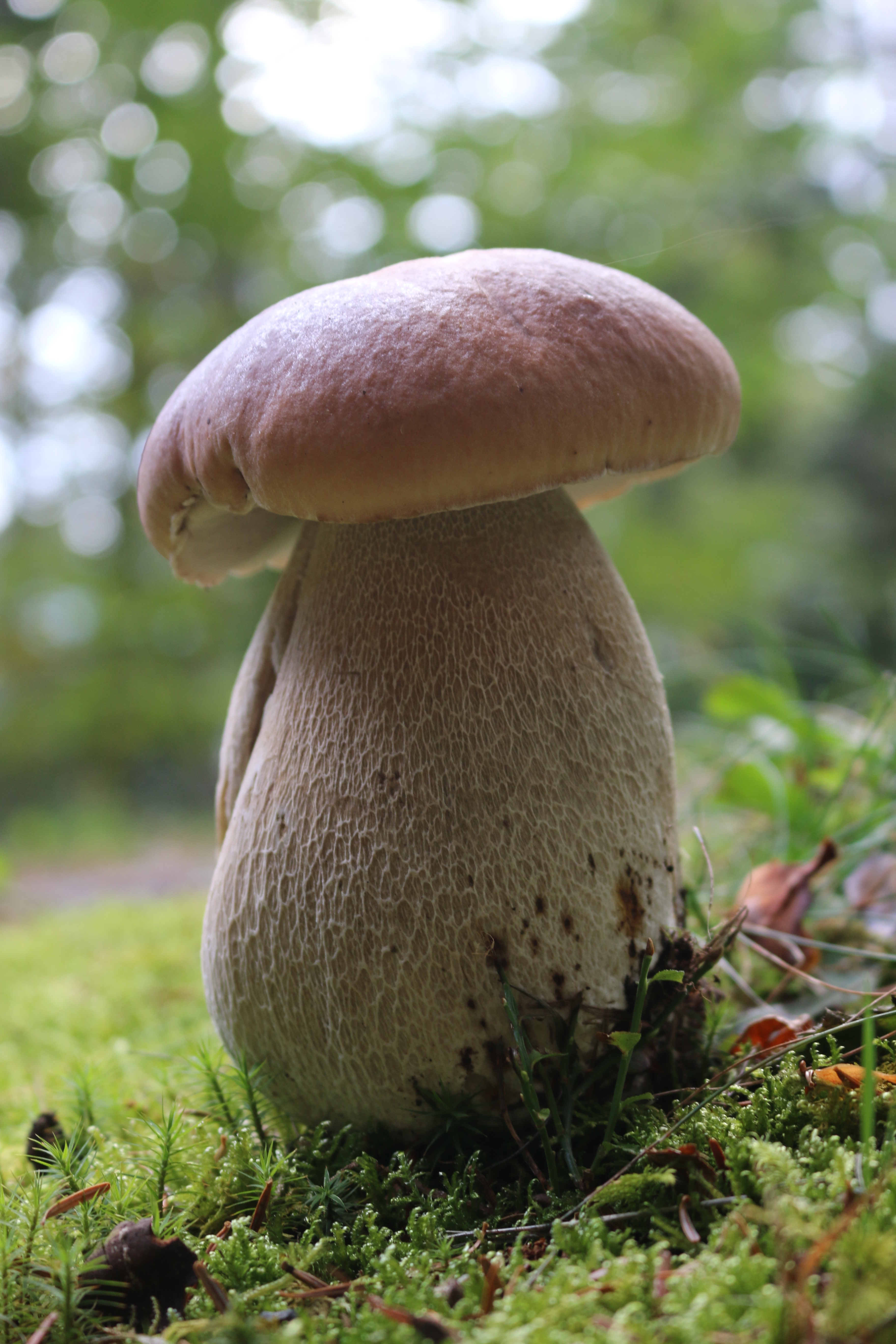
Within the framework of the JGI Mycorrhizal Genomics Initiative and the 1000 Fungal Genomes project, we are sequencing a phylogenetically and ecologically diverse suite of mycorrhizal fungi (Basidiomycota, Ascomycota and Glomeromycotina), which include the major clades of symbiotic species associating with trees and woody shrubs. Analyses of these genomes is providing new insights into the diversity of mechanisms for the mycorrhizal symbioses. These genomic resources are also used to address fundamental questions in the evolution of the symbiotic species from their saprotrophic and endophytic cousins.
The Boletus edulis species complex in the Boletales includes ectomycorrhizal fungi producing edible mushrooms highly prized worldwide. B. edulis cultivation is a challenge targeted by many agro-food biotech companies involved in mushroom crop production. Unfortunately, a major problem up to now is that only a few ECM fungal species can be induced to fruit in co-culture in interaction with their hosts (ie., in tree nursery). Deciphering fruit body production by using molecular genetics and a better understanding of the developmental processes underlying fruiting in this charismatic edible model would undoubtly help in mushroom production/cultivation. Population genomics of B. edulis populations will also provide informations on fruiting in natural conditions.
Boletus edulis sensu lato (penny bun mushroom, cep, cèpe de Bordeaux, porcino, Steinpilz) is a complex of at least five species of mycorrhizal fungi which grow primarily with hosts in Fagaceae, Pinaceae, and Betulaceae. However, high number of taxa - including several varieties, subspecies and/or species sensu stricto - have been described in this species complex. Like other boletes (Boletineae), it occurs in a wide variety of habitats throughout the Northern Hemisphere and has been accidentally introduced into South Africa and New Zealand. The fungus grows in deciduous and coniferous forests and tree plantations, forming symbiotic ectomycorrhizal associations (middle/late stage the fruiting succession). The fungus produces spore-bearing fruit bodies above ground in Summer and Autumn.
Genome Reference(s)
Miyauchi S, Kiss E, Kuo A, Drula E, Kohler A, Sánchez-García M, Morin E, Andreopoulos B, Barry KW, Bonito G, Buée M, Carver A, Chen C, Cichocki N, Clum A, Culley D, Crous PW, Fauchery L, Girlanda M, Hayes RD, Kéri Z, LaButti K, Lipzen A, Lombard V, Magnuson J, Maillard F, Murat C, Nolan M, Ohm RA, Pangilinan J, Pereira MF, Perotto S, Peter M, Pfister S, Riley R, Sitrit Y, Stielow JB, Szöllősi G, Žifčáková L, Štursová M, Spatafora JW, Tedersoo L, Vaario LM, Yamada A, Yan M, Wang P, Xu J, Bruns T, Baldrian P, Vilgalys R, Dunand C, Henrissat B, Grigoriev IV, Hibbett D, Nagy LG, Martin FM
Large-scale genome sequencing of mycorrhizal fungi provides insights into the early evolution of symbiotic traits.
Nat Commun. 2020 Oct 12;11(1):5125. doi: 10.1038/s41467-020-18795-w
